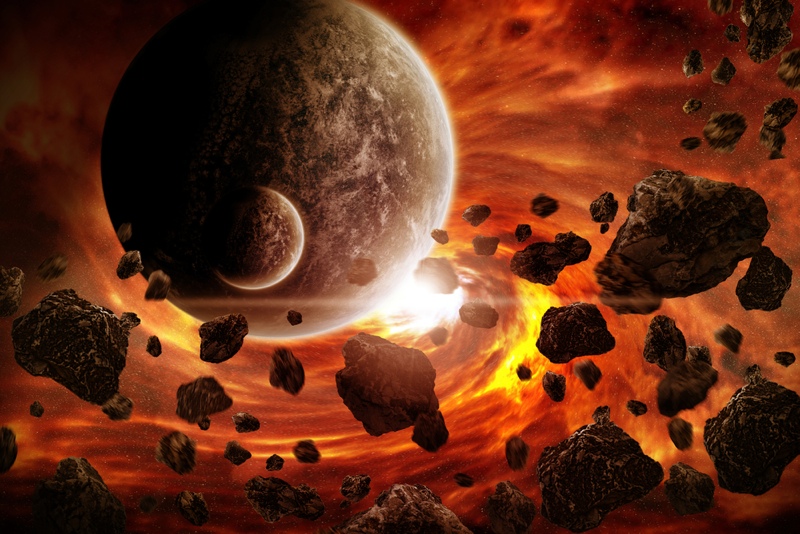Doomsday Revised: New Prediction Claims World Will End on Oct. 7

The world just won't seem to end on schedule.
The 2012 Mayan apocalypse was a total bust. The "super blood moon" of September 2015 failed to lead to rains of frogs and fire. And the May 2011 predictions of judgment day by an Oakland, California, radio preacher failed to pan out.
Or did they?
Falling into a long tradition of repurposing and revamping old doomsday predictions, an online Christian group is insisting that the now-deceased preacher, Harold Camping, was right, and that his prophecies forecast the end of the world. Tomorrow.
Yes, Oct. 7, 2015, is the new go-to date for Doomsday, at least according to the Pennsylvania-based eBible Fellowship. According to the group, Camping was correct that May 21, 2011, was an important day, spiritually speaking. On that day, they hold, God saved his last soul and closed the door of heaven. The group believes in the notion of predestination, which holds that God decided who would be saved from the start and a person's actions have no bearing on their afterlife. [Oops! 11 Failed Doomsday Predictions Recounted]
In 2011, Camping claimed that after the May 21 day of judgment, there would be only about five months until the world's end on Oct. 21, 2011. The eBible Fellowship has recalculated that second date, putting it at Oct. 7, 2015, "in all likelihood."
Doom again
Sign up for the Live Science daily newsletter now
Get the world’s most fascinating discoveries delivered straight to your inbox.

The online church's predictions haven't gained the same traction as Camping's original pronouncements, possibly because Camping's group was aggressive with outreach, buying billboards and conducting media interviews.
Nevertheless, the revised doomsday date highlights how end-of-the-world predictions persist. Previous failures rarely chasten new apocalyptic prophets. Often, doomsday groups retrench and reinterpret their failures.
One example involves today's Seventh-day Adventists: In 1822, a farmer and preacher named William Miller predicted the end of the world by 1843, a calculation later revised for Oct. 22, 1844. When the day came and went, it was dubbed "The Great Disappointment." Miller died five years later, still sure that the end was coming soon.
One offshoot of Miller's followers, the Millerites, became the Seventh-day Adventist church. The group still believes that a process of divine judgment has been ongoing since 1844 and will eventually culminate in the apocalypse, though it doesn't predict dates for the end of the world.
Likewise, Jehovah's Witnesses have survived as an organization, despite multiple failed doomsday predictions. One of these doomsday dates, in October 1914, is now seen as the beginning of the end times.
The appeal of the end
Though pits of fire and chaos seem like things to avoid, many people welcome the idea that the end is in sight. Doomsday appeals to people because it's an extreme vision of order, religion researcher Lorenzo DiTommaso of Concordia University in Montreal told Live Science in 2011.
"The first [belief] is that there is something dreadfully wrong with the world of human existence today," DiTommaso said. "On the other hand, there is a sense that there is a higher good or some purpose for existence, a hope for a better future."
In other words, the apocalypse is a kind of cosmic housecleaning: God is going to come back, reward the good, punish the bad and just generally straighten things up.
Secular people aren't immune to this sort of draw, as interest in survivalism and doomsday prepping shows.
"There's a great deal of satisfaction in saying, 'Oh, boy, I'm ready when the bombs go off/the environment collapses/the Arabs invade/the magnetic poles reverse,'" Richard Mitchell, an Oregon State University sociologist and author of "Dancing at Armageddon: Survivalism and Chaos in Modern Times" (University of Chicago Press, 2002), told Live Science in 2011.
Often, when the end fails to come, doomsday believers blame themselves, experts say. Sometimes, they blame the "oops" on faulty math or say they misinterpreted the message. In one famous 1954 example, a woman named Dorothy Martin prepared her followers for a world-ending flood one December night. When nothing happened, she announced a new revelation: Their group's prayers had been so successful that God had called the whole thing off. The group eventually fell apart, but Martin kept prophesizing until her death in 1992 — illustrating that once doomsday beliefs start, they're hard to shake.
Follow Stephanie Pappas on Twitter and Google+. Follow us @livescience, Facebook & Google+. Original article on Live Science.

Stephanie Pappas is a contributing writer for Live Science, covering topics ranging from geoscience to archaeology to the human brain and behavior. She was previously a senior writer for Live Science but is now a freelancer based in Denver, Colorado, and regularly contributes to Scientific American and The Monitor, the monthly magazine of the American Psychological Association. Stephanie received a bachelor's degree in psychology from the University of South Carolina and a graduate certificate in science communication from the University of California, Santa Cruz.
Why is yawning contagious?
Scientific consensus shows race is a human invention, not biological reality









